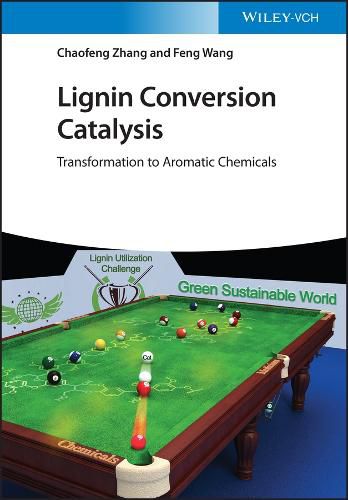Readings Newsletter
Become a Readings Member to make your shopping experience even easier.
Sign in or sign up for free!
You’re not far away from qualifying for FREE standard shipping within Australia
You’ve qualified for FREE standard shipping within Australia
The cart is loading…






Authoritative reference providing comprehensive knowledge on the lignin conversion process with recent developments of mechanisms and techniques
Lignin Conversion Catalysis covers the strategy, catalysis, and mechanisms of cleaving lignin linkages to aromatic chemicals and crucially elaborates on the specifics of multiple original lignins. Sample topics covered in the work include:
Lignin depolymerization, models, and techniques of various lignins by heterogeneous substrates (such as native lignins, Kraft lignins, and organosolv lignins) Cleavage methods for lignins (such as oxidation and hydrogenation) as well as their main products (such as arenes, phenol, and acid) Relationships among the strategy/method, catalyst, and mechanism when viewed from the cleavage order and the type of corresponding chemical bonds Commercial components of lignin, a globally available raw material with many applications in drug design, polymers, and more
Organic chemists, polymer chemists, and chemical engineers can use the valuable information contained in Lignin Conversion Catalysis to get up to date on this new raw material and understand the various developments that have been made in the field to make it viable for industrial purposes.
$9.00 standard shipping within Australia
FREE standard shipping within Australia for orders over $100.00
Express & International shipping calculated at checkout
Authoritative reference providing comprehensive knowledge on the lignin conversion process with recent developments of mechanisms and techniques
Lignin Conversion Catalysis covers the strategy, catalysis, and mechanisms of cleaving lignin linkages to aromatic chemicals and crucially elaborates on the specifics of multiple original lignins. Sample topics covered in the work include:
Lignin depolymerization, models, and techniques of various lignins by heterogeneous substrates (such as native lignins, Kraft lignins, and organosolv lignins) Cleavage methods for lignins (such as oxidation and hydrogenation) as well as their main products (such as arenes, phenol, and acid) Relationships among the strategy/method, catalyst, and mechanism when viewed from the cleavage order and the type of corresponding chemical bonds Commercial components of lignin, a globally available raw material with many applications in drug design, polymers, and more
Organic chemists, polymer chemists, and chemical engineers can use the valuable information contained in Lignin Conversion Catalysis to get up to date on this new raw material and understand the various developments that have been made in the field to make it viable for industrial purposes.